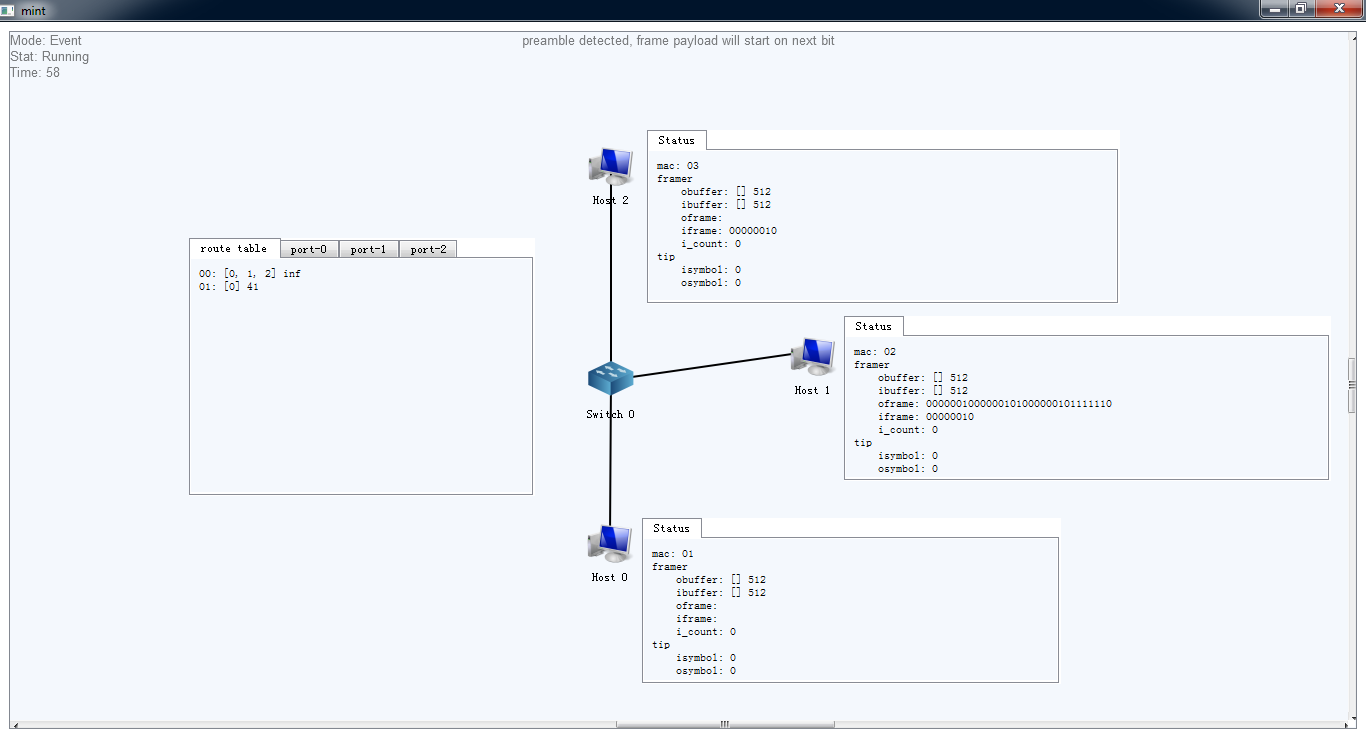A Python library for computer network simulation. (Developing)
Example usage:
from mint import *
h1 = Host()
h2 = Host()
hub = Hub()
link(h1, hub.ports[0])
link(hub.ports[1], h2)
@proc
def _():
h1.port.send('111')
@proc
def _():
print h2.port.recv(8)
run()
Output:
00011100
Up to application layer, write application just as application:
# server.py
from mint import socket
listen_sock = socket.socket(socket.AF_INET, socket.SOCK_STREAM)
listen_sock.bind(8080)
listen_sock.listen()
while True:
sock, addr = listen_sock.accept()
print 'Connection established with', addr
msg = ''
while True:
ch = sock.recv(1)
msg += ch
if ch == '\n':
break
sock.send('You said: ' + msg)
sock.close()
# client.py
from mint import socket
sock = socket.socket(socket.AF_INET, socket.SOCK_STREAM)
sock.connect('192.168.0.2')
sock.send('hello server\n')
msg = ''
while True:
ch = sock.recv(1)
msg += ch
if ch == '\n':
break
print msg
Down to physical layer, model the link channal behaviour as you wish:
# main.py
from mint import *
a = Host(ip='192.168.0.2', script='server.py')
b = Host(ip='192.168.0.3', script='client.py', wait=1)
switch = Switch()
link(a, switch.ports[0])
link(b, switch.ports[1], latency=20, error_func=error.flip_bit(ith=3))
run()
